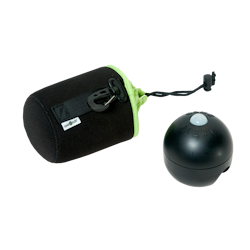How To Stay Safe While Feral Hog Hunting
Hog hunting is a popular pastime for many hunters looking to take on a challenge, and is a sanctioned control method in a number of states with mounting hog populations. Despite the allure for hunters, tracking and taking feral hogs, which are considered a harmful, invasive, and dangerous species, comes with a number of risks. Take a look at these hog hunting safety tips to ensure a safe and productive hunt. New to hog hunting? Check out our hog hunting tips for beginners.

WHAT MAKES FERAL HOGS DANGEROUS?
There are a number of factors which make feral hogs a dangerous animal to hunt. A full-grown male hog typically weighs around 200 pounds, but can grow to weigh more than 300 pounds. Feral hogs are known for being mean creatures and their bad attitude, combined with their territorial nature, can create extremely unsafe conditions for hunters.
Perhaps the most dangerous physical attribute hogs possess are their four razor-sharp tusks, which are capable of inflicting severe harm on animals and humans alike. These tusks, combined with their ability to reach speeds of almost 25 miles/hr., make hogs an animal you don’t want to find yourself in the path of. Finally, feral hogs have a number of diseases which can be contracted by humans, most notably swine brucellosis, a bacterial disease which is easily transmitted through contact with an infected hog’s blood.
CAN YOU STAY SAFE ON A HOG HUNT?
Despite the obvious risks, there are a number of precautions you can take to protect yourself when hog hunting.
PREPARE BEFOREHAND
As any experienced hunter knows, the act of hunting goes far beyond showing up to the woods with a rifle. Proper planning and preparations must take place far before one arrives ready to shoot. Before you embark on your hog hunting excursion, be sure to map out safety guidelines and emergency plan preparations with anyone accompanying you on the trip. Develop a checklist of items you need with you in case an injury should occur.
HAVE AN ESCAPE ROUTE
You want to choose a spot that gives you enough coverage from the hogs, in the case that they become agitated. Tree blinds are surefire choices for staying safe; those who hunt from a ground position should pick an area near an easily climbable tree or high rocks, should they need a means of escape.
ENSURE COMMUNICATION
Make sure you have a way to communicate with other hunters if you plan on splitting up. The ability to communicate quickly and clearly is vital, should you find yourself unexpectedly charged by a hog, or surrounded by a pack. Remember that cell phone service may be limited in the area, so it’s necessary to bring a back-up, reliable communication device, such as two-way radios.
STAY AWAY FROM PIGLETS
Sows are extremely protective when it comes to their piglets – so much so that hunters use recorded piglet squeals to draw hogs out in to the open. While this may be a good hunting tactic, approaching piglets in the open is extremely dangerous. Regardless of whether larger hogs are within eyesight, it’s imperative to stay away from piglets.
DRESS HOGS CAREFULLY TO AVOID DISEASES
Stay away from hunting any animal which exhibits signs of illness. To protect yourself when handling a hog carcass, be sure to wear disposable gloves and safety goggles, avoid direct contact with any bodily fluids, and wash your hands thoroughly following butchering. Read more about how to protect yourself from swine brucellosis.
EXERCISE EXTREME CAUTION
Hunting hogs can be a thrill and challenge even for experienced hunters. However, there are a number of factors which make it an extremely dangerous game. Overall, it’s important to exercise extreme caution when hog hunting. Hunters who respect the feral hog’s power and follow safety advice are more likely to have a successful, safe hog hunt.












